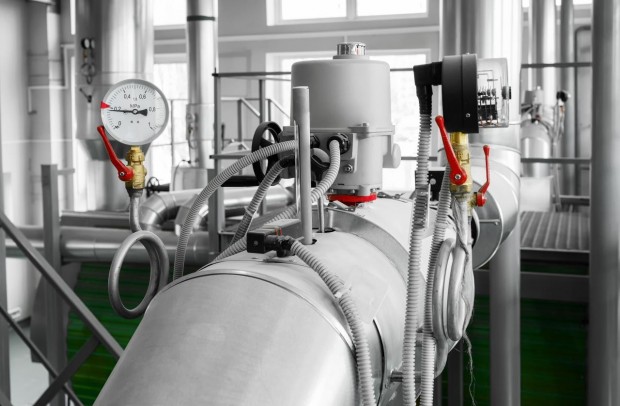What Is A Thermocouple And How Does It Work?

Measurements are essential for daily life. Being able to measure something allows you to recognize its value and experiment with any fluctuation in results. For example, when you know how to measure temperature, you'll have a reference point-or your ideal temperature-and examine its variations, if it's getting too hot or too cold.
Without accurate measurements, you can't monitor the temperatures of various areas in your home. Also, it'll be difficult to determine your body temperature during a fever accurately. These are only a few of its applications. Despite encountering temperature measurements nearly every day, many people still confuse heat with temperature, and use these concepts interchangeably.
Heat Vs. Temperature
Heat is a form of energy that measures the total kinetic and potential energies of molecules inside a system. On the other hand, temperature is used to measure the degree of heat within an object, particularly its hotness or coldness. When measuring the temperature of an object or person, you'll be using units Kelvin (K), degrees Celsius (°C), degrees Fahrenheit (°F), and the lesser known degrees Rankine (°R).
Certain tools and instruments are utilized to measure temperature. However, you can't use a thermometer designed to determine if one has a fever to measure the temperature of molten metal. These tools are built from different materials and they use various quantities to measure temperature. For instance, glass thermometers are filled with liquid mercury. As the temperature rises, the bulb filled with liquid mercury expands. The liquid's rate of expansion identifies the temperature.
On the other hand, did you know that there's a temperature-recording equipment that measures change in voltage? This instrument is called a thermocouple. What is a thermocouple & how does it work? Read on to find out.
What Is A Thermocouple?
A thermocouple is a temperature sensor that uses change in voltage to measure temperature. It has legs made up of two different metal leads placed closely to each other, as the name 'thermocouple' implies. When these two legs are joined, they create an electrical junction, triggering a temperature change. As the temperature shifts, a change in voltage is induced. You can use a thermocouple reference table to interpret the change in voltage and calculate the temperature.
Why Use A Thermocouple?
It's important to first note that thermocouples are different and aren't technically classified as thermometers. While thermometers directly measure temperature, thermocouples are thermoelectric devices which incorporate values of voltage to find temperature.
Among numerous temperature sensors, a thermocouple is the most frequently used due to its ease of use, simplicity, and small size that allows quick response to temperature changes. Thanks to its basic operation and reliable results, thermocouples are a strong candidate for accurate and precise temperature measurement of 270°C to 2,500°C, with margins of error ranging only from 0.5°C to 2°C.
How Do Thermocouples Work?
As mentioned earlier, a thermocouple has two different wired metal legs. Take iron and constantan as an example. When iron and constantan are fused together, this electrical junction generates a thermoelectric effect that induces a potential difference in millivolts (mV) called the Seebeck effect. The output voltage produced from this mechanism is a function of the change in temperature.
Therefore, a zero potential difference from the junction generates zero voltage output (V1 = V2), meaning there will be no temperature change. If these two metals are at different temperatures, a voltage output will be generated between these junctions (V1 - V2).
Types of Thermocouples
Thermocouples are made from a variety of materials and junctions. The iron/constantan junction is only known as the Type J thermocouple, and there are more types of thermocouple junctions and their conductors (+/-):
-
Type B: 30% platinum rhodium/6% platinum rhodium
-
Type R: 13% platinum rhodium/platinum
-
Type S: 10% platinum rhodium/platinum
-
Type N: nicrosil/nisil
-
Type K: nickel/chromium or nickel/alumel
-
Type E: nickel/chromium/constantan
-
Type T: copper/constantan
These thermocouple classifications have varying applications, temperature range, and accuracy. Type K is the most common and inexpensive out of all options, while type B is best for extremely high temperature applications.
Additionally, thermocouples are covered in protective sheaths that minimize the effect of corrosion from its external surroundings. The protective sheaths can be made from either one of these:
-
316 SS: Or stainless steel, is the most used sheath material that is cost-effective and corrosive resistant.
-
304 SS: Less corrosion-resistant than 316 SS.
-
Inconel 600: Made up of nickel-chromium alloy, and is perfect for highly corrosive environments.
Thermocouple Uses And Applications
Since thermocouples are the most popular temperature sensors, not to mention their low cost and extensive temperature capabilities, here are a few of their common real-life uses and applications:
-
Used in thermostats of residential and commercial establishments
-
Used to measure temperature in chemical and petroleum plants
-
Serves as a heat pump for thermoelectric cooling
-
Used to monitor temperature for industries using metal, iron, and aluminum
-
Utilized in situations working in high temperature, such as rocket engines, furnaces, and ammunition
Takeaways
The mechanisms and versatility of thermocouples are revolutionary in finding new ways to measure temperature. Before investing in thermocouples for personal and occupational purposes, it's paramount to know how they work and which applications they're best suited for.
See Now: NASA's Juno Spacecraft's Rendezvous With Jupiter's Mammoth Cyclone
* This is a contributed article and this content does not necessarily represent the views of scienceworldreport.com




Join the Conversation